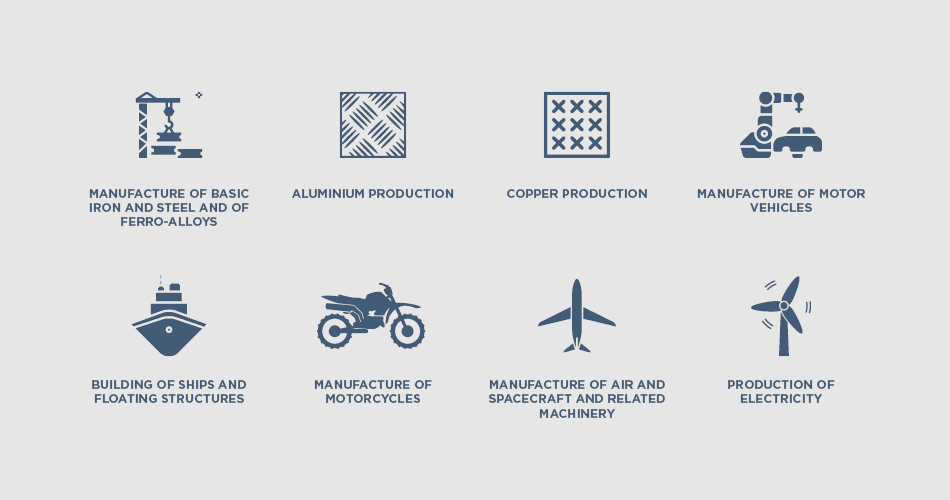Two years after the end of the Brexit transition period, the UK's new domestic subsidy control regime came into full force on 4 January 2023.
We run through the latest changes and provide insights into some key practical aspects of the new regime. Our key takeaway: when it comes to preparing a mandatory referral notification, public authorities and recipients of subsidies should not underestimate the workload involved – frontloading the work before the process officially starts is essential to securing good outcomes.
- Key changes
The Subsidy Control Act (the Act) came into full force on 4 January, having been partially in force since April 2022. The new regime will be largely familiar to those who have got to grips with subsidy control under the EU-UK Trade and Cooperation Agreement (TCA), but the Act introduces some important changes:
- The introduction of the Subsidy Advice Unit (SAU) to:
- review "subsidies of particular interest", ie subsidies exceeding £10 million (or exceeding £5 million in certain circumstances) – such subsidies are now subject to a new mandatory referral obligation;
This is the most substantive change brought in by the Act and the recently introduced guidance suggests that preparing a mandatory referral is likely to be a burdensome process for all involved – early stage engagement with the SAU is recommended and sufficient evidence and reasoning to demonstrate compliance with the principles will need to be prepared.
- review "subsidies of interest" (generally subsidies exceeding £5 million) which are subject to a voluntary referral;
- review any other subsidy which, under its new powers, the Secretary of State calls in;
- monitor and report on the effectiveness of the operation of the Act, and its impact on competition and investment within the UK.
- review "subsidies of particular interest", ie subsidies exceeding £10 million (or exceeding £5 million in certain circumstances) – such subsidies are now subject to a new mandatory referral obligation;
- An expanded list of 7 principles which public authorities must satisfy before awarding subsidies:
- the introduction of an additional principle: subsidies should be designed to achieve their specific policy objective while minimising any negative effects on competition or investment within the United Kingdom; andAn expanded list of 7 principles which public authorities must satisfy before awarding subsidies:
Particularly where larger value subsidies are involved, the Department for Business, Energy and Industrial Strategy (BEIS) Statutory Guidance suggests a fairly substantive analysis of the effects on competition will be necessary to demonstrate compliance with this principle.
- the expansion of the final principle to require consideration of negative effects on competition and investment within the United Kingdom as well (rather than just between the EU and UK).
- the introduction of an additional principle: subsidies should be designed to achieve their specific policy objective while minimising any negative effects on competition or investment within the United Kingdom; andAn expanded list of 7 principles which public authorities must satisfy before awarding subsidies:
- Reduced timeframes:
- for uploading details of subsidies to the BEIS transparency database (3 months rather than 6 months – save with regards to tax measures which remain at 1 year) – the list of details to be included has also expanded since 4 January in line with the requirements set out in the Subsidy Control (Subsidy Database Information Requirements) Regulations 2022;
- within which a challenge may be brought (1 month (generally) from the date subsidy information was uploaded to the transparency database rather than standard judicial review limitation period of 3 months).
A number of new guidance documents were published ahead of 4 January – see the "Relevant links and guidance" section below for useful links.
We would recommend that public authorities and frequent recipients of subsidies familiarise themselves with the guidance. In particular, public authorities are expected to carry out their assessment for the purposes of a mandatory referral in line with the BEIS Statutory Guidance.
the expansion of the final principle to require consideration of negative effects on competition and investment within the United Kingdom as well (rather than just between the EU and UK).
- The introduction of the Subsidy Advice Unit (SAU) to:
- Brief overview of the new regime
- As under the TCA, there are two key questions to answer under the Act:
- 1.) Is there a subsidy? This will be the case if all four limbs of the definition set out at section 2 of the Act are met;
- 2.) Is the subsidy compliant with the Act? This will generally be the case where:
- an exemption applies (ie the subsidy is below £315,000 or below £725,000 where given in respect of a service of public economic interest); or
- the subsidy is compliant with the 7 subsidy control principles contained in Schedule 1 of the Act.
- In the majority of cases, where the granting authority is satisfied that it is granting a compliant subsidy, it must simply upload details of the relevant subsidy to the transparency database within 3 months of it being awarded.
- The crucial change under the Act is that where a subsidy meets the definition of a "subsidy of particular interest" a reference must be made to the SAU before the subsidy can be awarded.
What constitutes a subsidy of particular interest?
- The subsidy does not pertain to a sensitive sector* and the total amount (including any related subsidies to the same beneficiary which exceeded £1m) exceeds £10m; or
- The subsidy does pertain to a sensitive sector and the total amount (including any related subsidies to the same beneficiary which exceeded £1m) exceeds £5m; or
- The subsidy is a restructuring subsidy (ie to restructure an ailing or insolvent enterprise, deposit taker or insurance company).
*Sensitive sectors currently include (subject to periodical review):

- Granting authorities are encouraged to engage with the SAU as early as possible where it becomes clear that a mandatory referral will be necessary. However, formal timelines do not commence until the referral is actually made. From this point:
- the SAU has 5 working days to confirm whether the referral is complete;
- after confirming that it is complete, the SAU must issue a report within 30 working days (subject to extensions);
- a 5 day "cooling off period" from the date of the report applies during which the subsidy must not be granted.
- For further background on the operation of the UK's subsidy control regime, see our previous insights of February 2022, July 2021 and June 2021.
- As under the TCA, there are two key questions to answer under the Act:
- Insights
Early stage engagement
Public authorities and recipients of larger subsidies are now required to engage in a more formal and structured process before any subsidy is granted. The bulk of the work in preparing for this process will of course need to occur prior to the statutory timeframes kicking in – this will be crucial to ensuring that the referral is not rejected as incomplete upon submission to the SAU (a result which would delay the start of the 30 working day review period).
To aid with preparing a complete referral, public authorities are advised to engage in pre-referral discussions with the SAU as early as possible after it becomes clear that a mandatory referral is necessary. The SAU will not provide any advice on the subsidy itself during this phase but will help the public authority to identify the information that should be submitted alongside the referral.
Evidential requirements
The SAU expects public authorities to have conducted a thorough assessment of the subsidy's compliance with the principles (following the BEIS Statutory Guidance) and to present evidence to support the same. We anticipate that, to some extent, the necessary evidence will reflect the evidence prepared by the beneficiary when applying for the subsidy. The referral is likely to involve the creation of additional evidence which would not previously have been required – particularly where dealing with larger or more complex subsidies. This might include:
- evidence of the public benefits to be created by the subsidy, eg the number of new jobs to be created or clear plans of the expected benefit to the local economy, including technical reports which support the same (to assist with demonstrating Principle A, ie that the subsidy serves a clear public policy objective);
- the beneficiary's business case including a value for money assessment which may include a viability gap analysis and a counterfactual analysis (to assist with demonstrating Principles B-E, ie the subsidy is proportionate, necessary and has an incentivising effect);
- evaluations of similar previous schemes and or alternative options considered (to assist with demonstrating Principle E, ie that the subsidy could not have been achieved through less distortive means);
- a detailed assessment of the effects of the subsidy on competition which should include evidence to support how the relevant market has been defined (eg market research reports or reports/decisions by competition authorities) (to assist with demonstrating Principle F, ie the subsidy is designed to deliver a public policy objective while minimising negative effects on competition);
- the public authorities' business case, public policy appraisal and/or output from a public consultation exercise (to aid with evidencing the balancing exercise required by Principle G).
Confidentiality
To ensure a smooth notification process, you should factor in time to deal with the treatment of confidential information in the SAU's report. Given the short timescales involved for the SAU's evaluation process, timings for making representations to the SAU are very tight, so frontloading this work as much as possible is key. The CMA has publicly stated that it expects public authorities to plan for these confidentiality checks before submitting a referral, and schedule public announcements appropriately if there are commercial or policy sensitivities to publication[1].
Third Party Engagement
Third parties can also engage with the SAU. Given tight statutory timings, third parties would typically need to provide their views within 10 working days in order to be factored into the SAU's evaluation. The SAU has indicated that it will generally not publish third party submissions but will share them with the public authority as ultimate decision-maker on the subsidy[2].
The SAU's role is only advisory
The SAU's role is not to approve or block the subsidy, but to issue a report which includes an evaluation of the public authority’s Assessment of Compliance, which takes into account any effects of the proposed subsidy or scheme on competition or investment within the United Kingdom. The report may also include advice about how the public authority’s assessment might be improved or the proposed subsidy may be modified to ensure compliance with the subsidy control requirements under the Act. It is then for the granting authority to decide whether and on what basis to ultimately grant the subsidy.
There is therefore room for public authorities to depart from the SAU's advice. Public authorities should think carefully before doing so in practice however. The SAU's reports will be published and details of the subsidy will be shown on the transparency database, making it clear to would-be challengers that the public authority has not followed the SAU's advice. Accordingly, such a decision is likely to make them more vulnerable to judicial review challenge. Of course, there may be good reasons why a public authority chooses to depart from the SAU's recommendation – where this is the case, we would advise them to give some thought to how they fully document their rationale in case of future challenge. One example could be where the SAU took account in its analysis of a third party submission which, in the local authority's considered view, is not accurate.
Linked to this, it is worth noting that the SAU's information gathering powers relate to the preparation of reports on the regime under the SAU's monitoring functions. Public authorities and subsidy recipients will have an incentive to provide complete and accurate information, as the SAU can reject their referral or stop the review clock.
The SAU has indicated that it will not provide "no subsidy" decisions. Where the SAU considers that the circumstances of a case do not trigger the application of the subsidy control regime, it will instead suggest to the relevant party that it withdraws its notification.
Future scope for "streamlined routes"
The Government has confirmed that the new regime will include "streamlined routes" which will set out criteria for certain categories of subsidy schemes in relation to which it will not be necessary to carry out the usual principles assessment provided the relevant "terms and conditions" are met – see the Government's policy statement and illustrative examples published in January 2022. To date, the Government has published 3 streamlined subsidy schemes and associated guidance. These relate to:
(1) research, development and innovation – allowing subsidies for feasibility studies, industrial research and experimental development projects and SME research, development and innovation support;
(2) energy usage – allowing subsidies for energy demand reduction projects, green heat network projects and related green skills training; and
(3) local growth – allowing subsidies for SMEs for business development projects, subsidies to support the employment of workers with disabilities and disadvantaged workers.
Each streamlined route is subject to a number of "terms and conditions" (including in relation to eligible costs, subsidy ratios and maximum award amounts) which will be largely familiar to those with knowledge of the EU's General Block Exemption Regulation (GBER) regime.
These routes present an opportunity to lessen the burden on public authorities and subsidy recipients to some extent, as assessing the compliance of subsidies made under a scheme will become more akin to a tick box exercise rather than an individual principle assessment. It was also hoped that the introduction of the streamlined routes would avoid the need to notify certain subsidies of particular interest to the CMA (in the same way as GBER exempts aid from notification). However, the latest information published by the Government suggests that opportunity is yet to be fully realised, as, with one exception (for green heat networks under the energy usage streamlined route), the maximum award amounts under the examples published to date are well below the upper threshold for subsidies of particular interest.
The Government is keeping this aspect of the regime under review and could designate more streamlined routes or amend the terms and conditions of existing ones in future.
- Footnotes
[1] CMA, Summary of consultation responses – Summary of responses to the draft Guidance on the operation of the subsidy control functions of the Subsidy Advice Unit (CMA166resp), page 11.
[2] SAU Guidance (SAU1), paragraphs 3.23-3.24.


